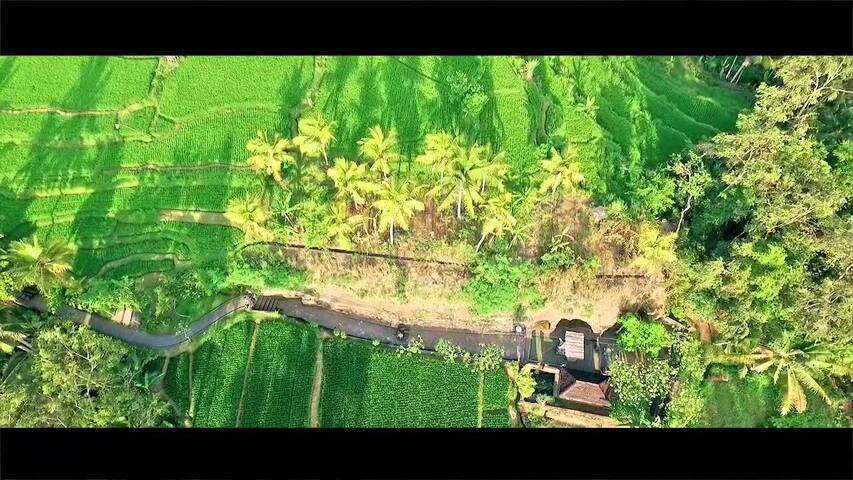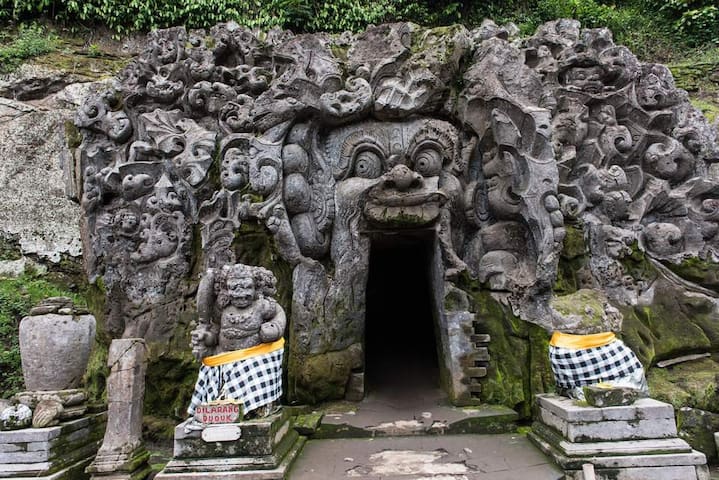Sightseeing
Yeh Pulu is an ancient site in Bedulu Village , Blahbatuh District , Gianyar , Bali Province . This site is located 500 meters southeast of the Elephant Cave .
Yeh Pulu was first discovered in 1925 by Retainer of Ubud . The inventor then reported it to the Netherlands. Shortly afterward Nieuwendkamp reported it in the official report of Oudheidkundig Dienst. In the report, it was reported that the ancient site of Yeh Pulu suffered damage due to being exposed to the paddy water from above.
6 locals raden deze aan
Yeh Puluh
Yeh Pulu is an ancient site in Bedulu Village , Blahbatuh District , Gianyar , Bali Province . This site is located 500 meters southeast of the Elephant Cave .
Yeh Pulu was first discovered in 1925 by Retainer of Ubud . The inventor then reported it to the Netherlands. Shortly afterward Nieuwendkamp reported it in the official report of Oudheidkundig Dienst. In the report, it was reported that the ancient site of Yeh Pulu suffered damage due to being exposed to the paddy water from above.
Goa Gajah, or Elephant Cave, is located on the island of Bali near Ubud, in Indonesia. Built in the 9th century, it served as a sanctuary.
Although the exact origins of the cave are uncertain, it is believed to have been built as place for spiritual meditation.[2] One folklore relates that it was created by the fingernail of the legendary giant Kebo Iwa. However, examining its style, the sanctuary was probably dated from the 11th century Bali Kingdom. The complex contains both Hindu and Buddhist imagery, as the cave contains lingam and yoni, symbol of Shiva, and the image of Ganesha, while by the river there are carved images of stupas and chattra, imagery of Buddhism.
The cave was rediscovered by Dutch archaeologists in 1923, but the fountains and bathing pool were not discovered until 1954
295 locals raden deze aan
Goa Gajah
Goa Gajah, or Elephant Cave, is located on the island of Bali near Ubud, in Indonesia. Built in the 9th century, it served as a sanctuary.
Although the exact origins of the cave are uncertain, it is believed to have been built as place for spiritual meditation.[2] One folklore relates that it was created by the fingernail of the legendary giant Kebo Iwa. However, examining its style, the sanctuary was probably dated from the 11th century Bali Kingdom. The complex contains both Hindu and Buddhist imagery, as the cave contains lingam and yoni, symbol of Shiva, and the image of Ganesha, while by the river there are carved images of stupas and chattra, imagery of Buddhism.
The cave was rediscovered by Dutch archaeologists in 1923, but the fountains and bathing pool were not discovered until 1954
The House of Masks and Puppets was initiated by Mr. Hadi Sunyoto, a businessman and cultural enthusiast, who has been collecting masks and puppets from different regions in Indonesia for the past years. Concerned with the lack of appreciation and awareness towards the disappearing traditional art form of masks and puppets in Indonesia, he decided to create a space to collect, preserve and spread the knowledge of the art form of masks and puppets. As a result, the House of Masks and Puppets was built in 2006.
The use of the word house for the space is used to signify the space as a place for activities, just like a house is. Although it has been a private cultural space, access to the space and its collection has been made available to the public. Since its opening, therefore, several exhibitions and activities have been held on a regular basis.
65 locals raden deze aan
Setia Darma House of Mask and Puppets
The House of Masks and Puppets was initiated by Mr. Hadi Sunyoto, a businessman and cultural enthusiast, who has been collecting masks and puppets from different regions in Indonesia for the past years. Concerned with the lack of appreciation and awareness towards the disappearing traditional art form of masks and puppets in Indonesia, he decided to create a space to collect, preserve and spread the knowledge of the art form of masks and puppets. As a result, the House of Masks and Puppets was built in 2006.
The use of the word house for the space is used to signify the space as a place for activities, just like a house is. Although it has been a private cultural space, access to the space and its collection has been made available to the public. Since its opening, therefore, several exhibitions and activities have been held on a regular basis.



